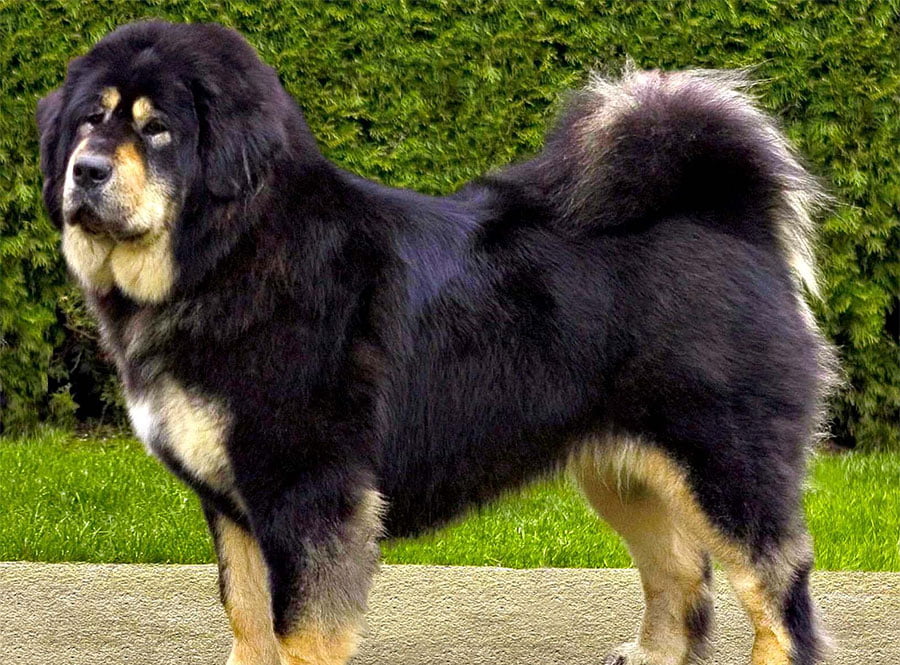Although ‘Mastiff’ is a term used to describe a number of large dog breeds, the name most often refers to English Mastiffs, which are very big dogs, being within the range of 70-85cms tall at the shoulder and 60-100kgs in weight. The ancestors of the English Mastiff can be traced as far back as Roman times in Britain.
In the past, this breed was used for various kinds of work, particularly for guard-dog roles. Today they are mostly bred as companions. Their huge size means that the Mastiff requires careful and particular handling and training, as well as good care and health treatment from their owners.
In appearance, Mastiffs have a large square head and a short muzzle, a short-haired coat (usually a light colour such as fawn or golden) and small dark-coloured V-shaped ears.
Although they live only 8-10 years on average, Mastiffs may spend almost half of their lives (3-4 years) growing, both physically and mentally. Most of their growth will happen in the first 12 months. This is followed by their filling out into an adult build, a process which can take about 2½ years. However growth may continue up to 4 years of age.
The temperament of the Mastiff is naturally gentle, loyal and friendly, but the breed requires the right training for this to properly develop. It is essential that he gets the right treatment as he is maturing, which can be quite a slow process since these dogs take time to grow and develop fully. A difficult temperament in such a big dog could be quite dangerous. Therefore training and development of the Mastiff does involve a great deal of hard work but should be well worth the effort.
The following steps help towards the development of the correct temperament in a Mastiff:
- Check with the breeder as to the importance he or she places on developing dogs with the right temperament.
- Observe the puppy to see if he appears to have a good natural temperament, which will provide a good starting point.
- Begin introducing your puppy to new people, animals and situations as soon as possible. Don’t overwhelm him with too many things at once, however it is important to gradually and gently get him adapted to lots of different experiences. This helps to minimise his agitation, aggression or nervousness and to develop his confidence in new situations as he grows.
- Since Mastiffs develop slowly, be patient with your puppy and have realistic expectations of him.
- Don’t encourage negative behaviour patterns.
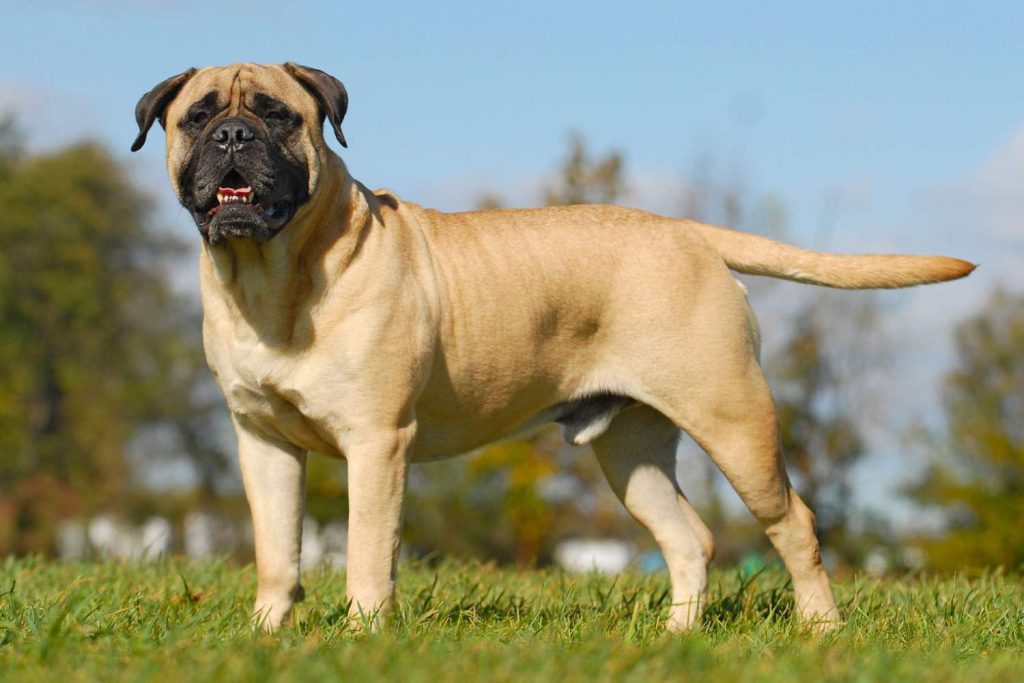
According to the Mastiff Club of Victoria, this breed has three phases of temperament development:
- Puppy stage, which is from the time you obtain him at about 8 weeks, to about 9 months. At this stage he is generally happy and friendly and will be exploring his environment.
- The second stage is from around 9 months to 2½ years, during which he may display ‘teenage’ behaviour, such as spats with other dogs and testing your authority. The important thing to do in this phase is to be patient and consistent. Recognise this is all part of his development and should be a temporary pattern.
- Stage three is from 2½ years to adulthood. If he has been well handled earlier he should develop into a calm adult dog and reward your efforts.
Training Your Mastiff
Training your Mastiff forms part of the development of his temperament. It is really important to train him while he is a puppy and of manageable size, especially if he has a stubborn trait. Training should begin at between 6 and 16 weeks and be ongoing at home as well as in classes if you attend them. The Mastiff Club states “kindness, consistency and lots of patience†are the required ingredients. Mastiffs respond best to positive reinforcement rather than harsh training.
Mastiffs make great family pets and are generally gentle with children. However because of their massive size — and children’s unpredictability — an adult should always be present to supervise interaction between the two.
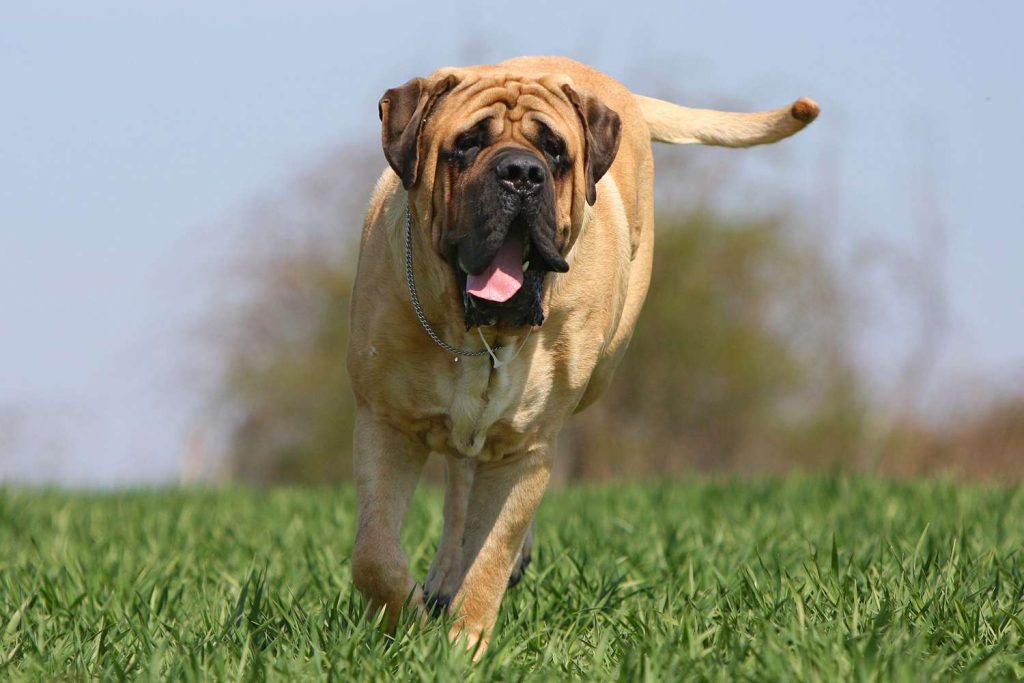
Care of your Mastiff:
- Grooming. This should involve a regular brushing, a bath every few months, and a nail trim when required. Get him used to these things while he is young.
- Exercise. Mastiffs are not the most active breed and need to sleep a lot, especially while they are growing. Over-exercising a Mastiff may damage his huge ligaments and muscles. A daily walk along with normal movement around the house or yard should be sufficient. Their size makes them prone to injury if they fall so it is important to prevent your puppy from excessive jumping. This breed does not cope well with hot weather and should be allowed to rest in a cool spot on hot days.
- Diet. The breeder should provide a Diet Sheet informing you of the food the puppy has been eating. It is vital to follow the breeder’s advice and recommendations and introduce dietary changes gradually. While they are growing, Mastiffs need a lot of food and supplements for good health, but once they reach adult size, they only need to eat about as much as an active medium-large sized dog. It is recommended to elevate your dog’s bowl to avoid potential problems he may develop from having to bend too low to reach his food.
- Water. Mastiffs need copious quantities of water available at all time, which should be changed at least daily. They need to drink more during hot weather.
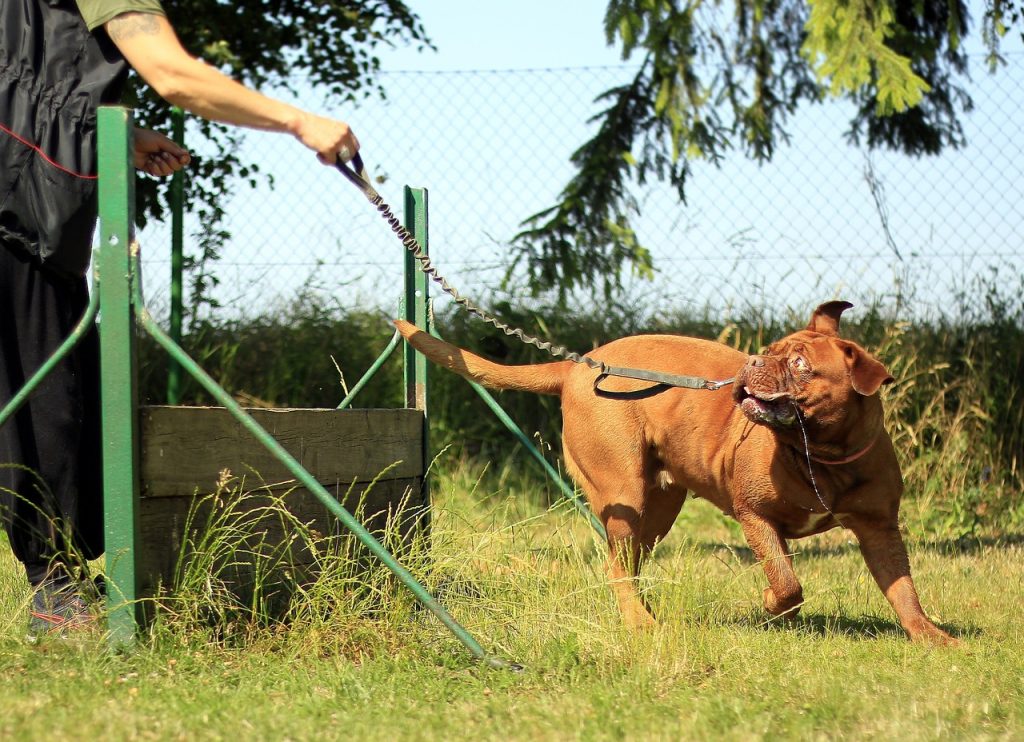
Breed Health Issues
Health problems of Mastiffs include hip and elbow dysplasia, eye conditions and thyroid disease. They are also susceptible to cancers and bloating, which can be minimised by avoiding exercising your dog close to mealtimes, feeding him two smaller meals instead of one big one and soaking his dry food before serving. The Mastiff Club recommends only buying a puppy that has been hip scored.
If you wish to own a Mastiff it is important to be aware that it involves a long-term commitment in terms of expense, care, training, interaction and supervision. These dogs may shed hair frequently. They are not really a suitable pet for people who are prone to allergies, or who are not at home much and do not have the time or patience to manage such a large animal. Mastiffs require a lot of input from their owners, but will reward them with plenty of loyalty, fun, love and affection.
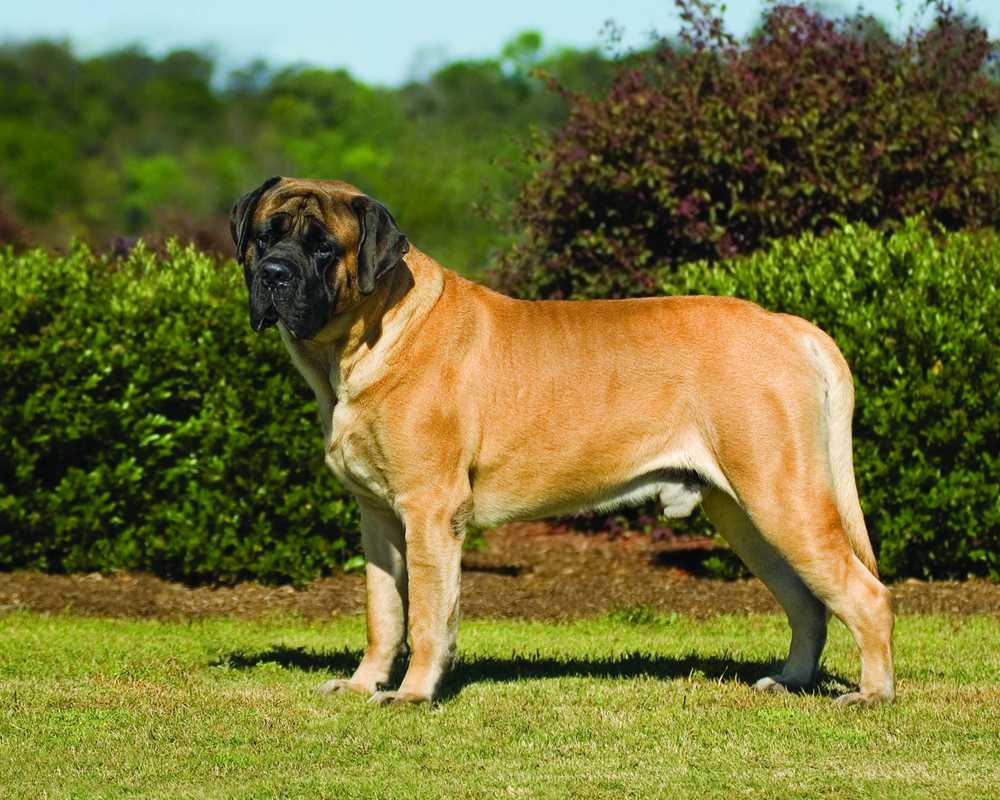
Mastiff Organisations in Australia
Mastiff Club of Victoria Inc
Mastiff Organisations in the UK
Mastiff Association
Mastiff Organisations in the US
Mastiff Breed Standard – American Kennel Club – Mastiff
Mastiff Club of Victoria
Did we miss your organisation? Let us know. Contact Us
